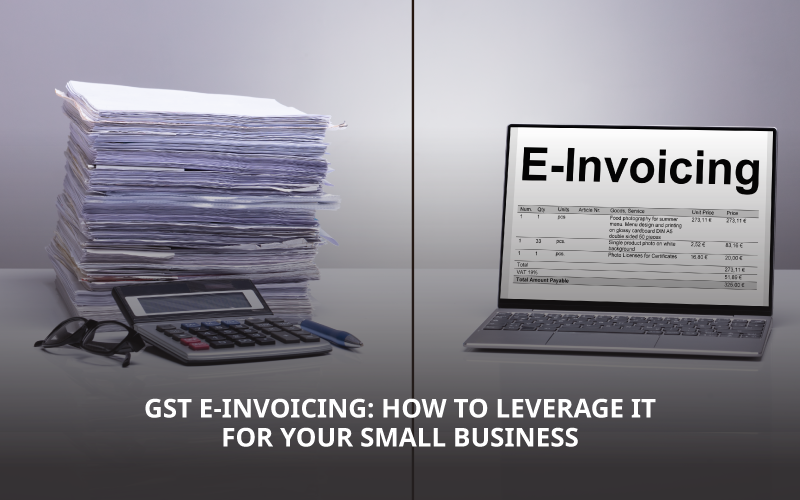The GST council implemented GST e-invoicing for all businesses with a turnover above Rs. 500 Crores. This notice got passed in Dec 2019. It will be made mandatory from April 2020, especially for businesses with an annual turnover of Rs. 100 Crore to 500 Crore.
Let’s understand what this process means for your business, and why you need it.
What is GST e-invoicing?
Electronic invoice/e-invoicing is electronic billing.
GST e-invoicing is an introduction to digital invoices for goods and services provided by businesses. It is implemented by several B2B companies as a prime motive to reduce tax evasion – and to prevent fraud.
In short, e-invoicing is the new system through which B2B transactions are authenticated electronically by GSTN, for further use on the GST portal.
How does GST e-invoicing work?
Under the new e-invoicing system, the Invoice registration portal (IRP) managed by the GST Network, issues an identification number against every invoice. With this, all invoice information gets transferred from the IRP portal to both GST and e-way bill portal.
This way, it eliminates manual entry requirements while filing the ANX-1/GST returns and part-A of the e-way bills; as the information is passed directly by the IRP to GST portal.
According to an article in ClearTax, under the new GST return system, an annexure in form GST ANX-1 will mostly take the place of the GSTR-1 return. However, the process of generating and uploading invoice details will remain the same.
How does GST e-invoicing benefit your small business?
The introduction of GST e-invoicing is to encourage two major areas – transparency and proof. This is for both businesses and the Government to benefit from.
Zero manual effort, zero errors:
Also, with e-invoicing, your business can eliminate the immense ordeal of manually filling out GSTR filing. E-invoice boosts automation for businesses that just don’t have the time. Manual filing also results in a lot of errors and mismatch of documents. GST e-invoicing increases the speed and accuracy of
Once the Invoice Reference Number is issued, it will update suppliers Annexe – 1 & if e-waybill is required to be issued, Part – A of the same gets updated. It will also update the Annexe-2 of the recipient.
Avoids major reconciliation issues:
E-invoicing of GST resolves and plugs a major gap in data reconciliation under GST to reduce mismatch errors. This process also allows invoice interoperability I.e – readable on different software and reduce data errors.
Why Government wants to issue e-invoicing:
Up until now, transactions took place between the recipient and supplier with the Government having no proof of transaction. With e-invoicing, an Invoice Reference Number is issued and the Government has proof, and so does the business.
Claiming Input Tax Credit:
Also, this benefits businesses when claiming Input Tax Credit. Since input credit is matched with output tax details, it is easier for GSTN to track fake tax credit claims.
Tax authorities acquire access to transactions as they take place in real-time. This happens because the e-invoice will have to be compulsorily generated through the GST portal.
No fake or manipulated invoices:
It reduces the scope of issuing manipulated invoices since the invoice is generated prior to carrying out a transaction.
The Instamojo invoice generator
Looking to keep track of payments with your clients? The Instamojo Invoice Generator app is a feature used by all our sellers to create invoices for their clients right here on the Instamojo dashboard.
Invoices that you create on Instamojo is sent with attached payment links. This way, your clients can pay you right away with the convenience of Instamojo. The Invoicing app is FREE for all Instamojo users.


1 comment
Awesome and Informative post ! Keep it Up